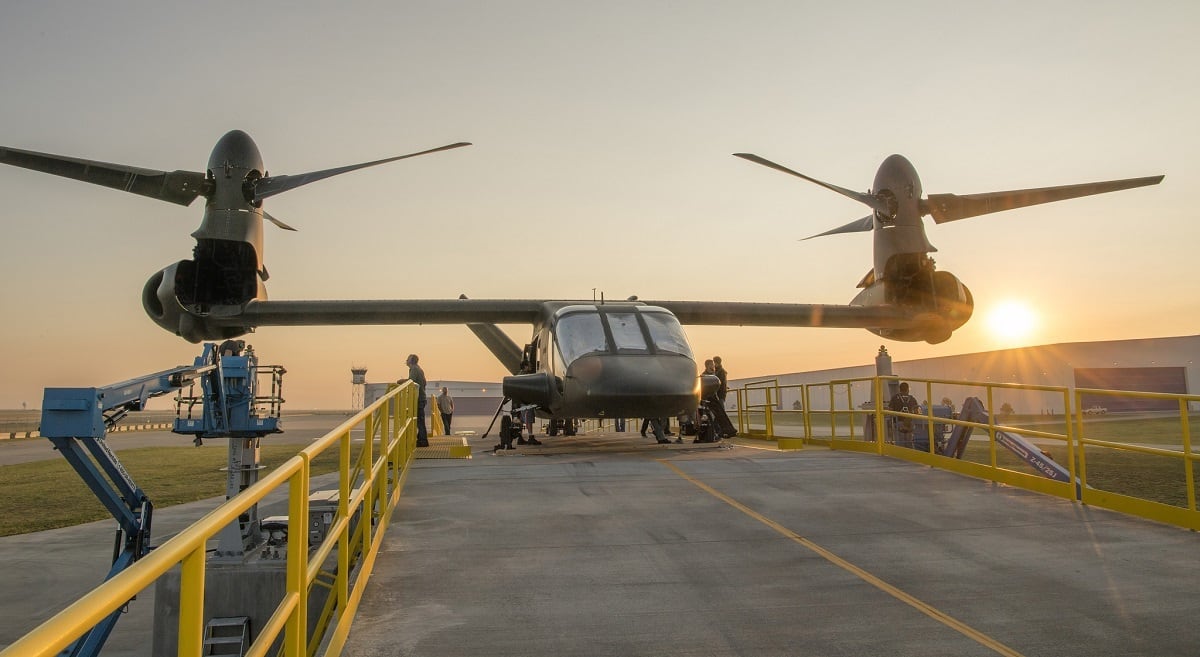WASHINGTON — Bell Helicopter’s V-280 Valor, a tilt-rotor aircraft built for a U.S. Army-led demonstration, has reached a flight speed of 80 knots and is flying at an altitude of 1,000 feet above ground level, said Keith Flail, the company’s vice president for advanced tilt-rotor systems, who spoke to Defense News in a Feb. 5 interview.
The V-280 had its maiden flight Dec. 18 at the Bell facility in Amarillo, Texas, picking up off the ground in a low hover for roughly 15 to 20 minutes.
“So far the aircraft is behaving incredibly well,” Flail said. To date, Valor has ticked off 8.2 flight hours total, more than 28 hours in restrained ground runs and more than 52 hours of rotor turn time.
Last week was a particularly big week for the new demonstrator when it reached 80 knots of air speed flying at an altitude of 1,000 feet accompanied by a chase aircraft, Flail said. Valor has also performed 360-degree hover-in-ground effects and has faced winds of roughly 15 knots at all azimuths, he added.
Bell finished building the tilt-rotor aircraft in September and began ground runs that month.
The Army had been planning — through its Joint Multi-Role demonstrator program — for two very different vertical lift prototypes to begin flight demonstrations last fall as part of a critical path to informing and shaping the design of a Future Vertical Lift helicopter fleet expected to hit the skies in the 2030s.
RELATED

The other prototype’s first flight has fallen behind the originally intended goal of September. The Sikorsky-Boeing SB-1 Defiant coaxial helicopter is now expected to start flying some time in the first half of 2018.
As Valor progresses through flight testing, Bell and the Army will continue to push the envelope.
Flail said a flight speed of 80 knots begins to test minor pylon rotation — which converts the rotors from facing upward to facing forward — and as air speed continues to pick up incrementally, the pylons will move to face forward until the aircraft is in full cruise mode.
Once testing moves into evaluating the aircraft’s flight characteristics in full cruise mode, more restrained ground runs will be performed in order to verify and validate system capability, Flail said.
Jen Judson is an award-winning journalist covering land warfare for Defense News. She has also worked for Politico and Inside Defense. She holds a Master of Science degree in journalism from Boston University and a Bachelor of Arts degree from Kenyon College.





